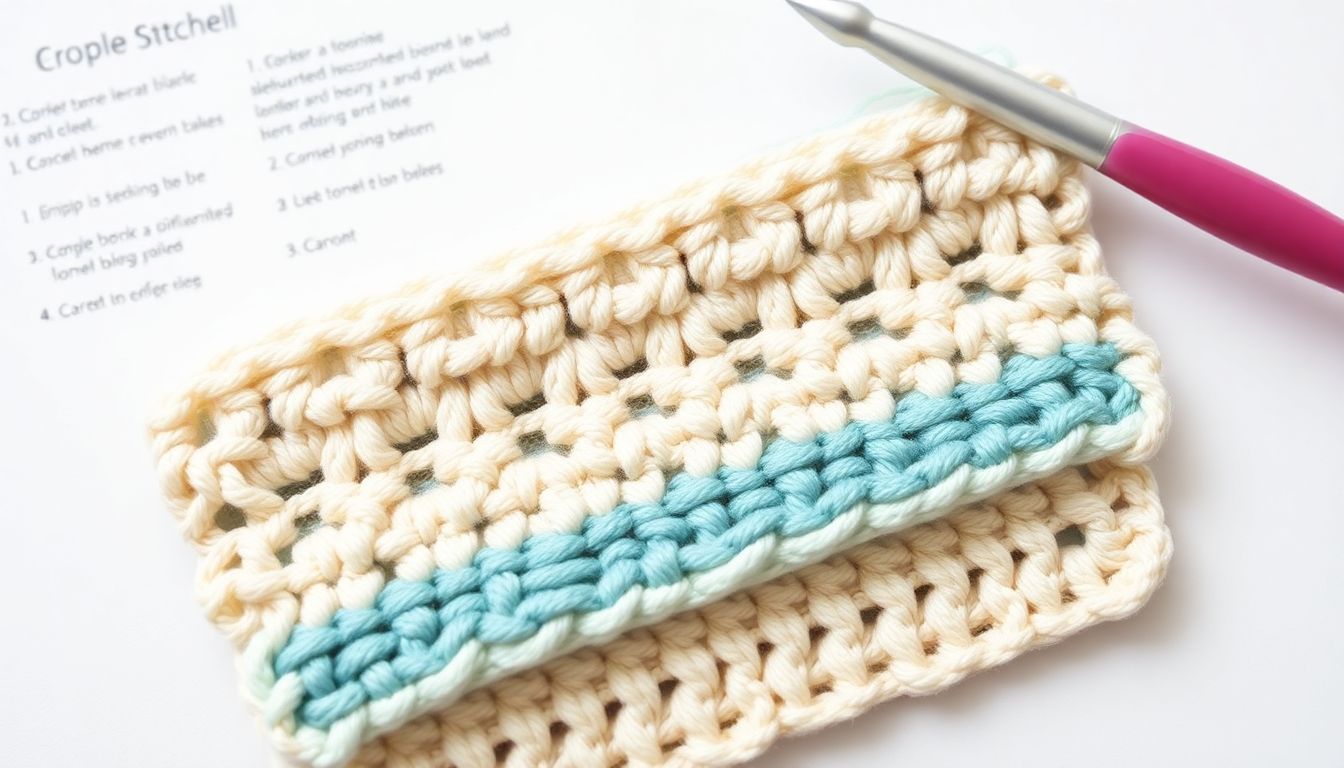
Crochet has become a beloved craft for millions, with over 35% of crafters taking up this art form in recent years. It’s accessible to all ages and skill levels. However, many newcomers feel overwhelmed by one vital aspect: reading patterns.
Crochet patterns are more than just instructions; they combine abbreviations, materials, and unique structures. Understanding these elements is crucial for any aspiring crocheter.
This article will break down the essentials of reading crochet patterns, allowing you to approach your projects with confidence.
Understanding Crochet Pattern Basics
Deciphering Abbreviations and Symbols: A Key to Success
One of the first steps in mastering a crochet pattern is understanding standard abbreviations. Common examples include:
- ch: chain
- sc: single crochet
- dc: double crochet
Accurate comprehension of these abbreviations is critical for successful crocheting. For an extensive list, check resources like Yarnspirations or Red Heart.
It’s also important to remember that patterns may use variations of these abbreviations. This can cause confusion, so always take the time to read through the entire pattern carefully before starting.
Identifying Essential Pattern Components: Materials and Gauge
Yarn weight and hook size are vital components in any crochet project. For instance, worsted weight yarn is a popular choice for beginners. Always match your yarn weight with the recommended hook size to ensure your finished product meets the intended design.
Gauge is equally important. It indicates how many stitches and rows fit within a specific area. For example, a pattern might call for a 4-inch square to contain 16 stitches.
If your swatch is larger or smaller than this, you may need to adjust your hook size or yarn. Be patient, as guaging correctly will save time and frustration in the long run.
Mastering the Pattern’s Structure: Rows, Rounds, and Repeats
Understanding the difference between rows and rounds is crucial for reading patterns:
- Rows: Typically go back and forth, like knitting.
- Rounds: Create circular shapes, often used in amigurumi or hats.
Identifying pattern repeats is essential for building your project efficiently. Most patterns will highlight the sections to repeat, making it easier to follow as you progress.
Navigating Written Crochet Instructions
Step-by-Step Pattern Reading: A Practical Approach
Follow these steps to successfully read crochet instructions:
- Read through the entire pattern first.
- Identify key phrases, like “chain 2” or “single crochet in each stitch.”
- Break it down line by line.
For example, a simple pattern might instruct:
- Chain 10
- Single crochet in the second chain from the hook
- Continue with single crochet in each stitch across
Focusing on these directives leads to a better understanding of increasing and decreasing stitches, helping you shape your designs.
Understanding Pattern Diagrams: A Visual Guide to Crochet
Diagrams often accompany written instructions, providing a visual representation of the project. These can make complex patterns easier to grasp.
Common crochet symbols include:
- Circle: Represents a stitch
- Arrow: Indicates direction
- Numbers: Dictate the stitch count
Learning these symbols enhances your ability to understand the pattern while allowing for a visual check as you crochet.
Tackling Common Crochet Pattern Challenges
Troubleshooting Common Mistakes: Identifying and Fixing Errors
Beginners often face challenges such as:
- Skipping rows: Always double-check each line before moving on.
- Misinterpreting instructions: Carefully reread if you’re unsure. Pacing yourself can help.
If mistakes occur, don’t panic. Most errors can be fixed by unraveling to the last known good stitch.
Adapting Patterns to Your Skill Level: Modifying for Success
Not every pattern is meant for every skill level. Modifying a project can provide a sense of accomplishment. For instance, switch out a complex stitch for a simpler one without changing the overall design.
Finding Reliable Crochet Patterns: Resources for Beginners
Finding beginner-friendly patterns can pave the way for growth. Here are three reputable sites:
- Ravelry – A massive community and pattern database
- AllFreeCrochet – Offers myriad free patterns
- Moogly – Features tutorials and free patterns
These sources are perfect for discovering new projects and enhancing your skills.
Essential Tools and Resources for Crochet Success
Building Your Crochet Kit: Essential Supplies
A well-equipped crochet kit should include:
- Yarn
- Crochet hooks (various sizes)
- Scissors
- Stitch markers
- Tapestry needle for weaving in ends
Notable beginner-friendly brands include Lion Brand and Clover, which offer durable and easy-to-use options.
Leveraging Online Communities: Finding Support and Inspiration
Joining online crochet communities can provide invaluable support. These groups offer solving problems, sharing creations, and receiving advice. Consider checking out:
These forums allow you to connect with fellow crocheters worldwide.
Conclusion
Reading crochet patterns becomes easier with practice and patience. From understanding abbreviations and materials to troubleshooting, each step is crucial for your crochet journey.
Start with simple, clear patterns and gradually work your way to more intricate designs. Embrace the learning curve, and soon you’ll be crafting beautiful projects with confidence. Happy Crocheting!